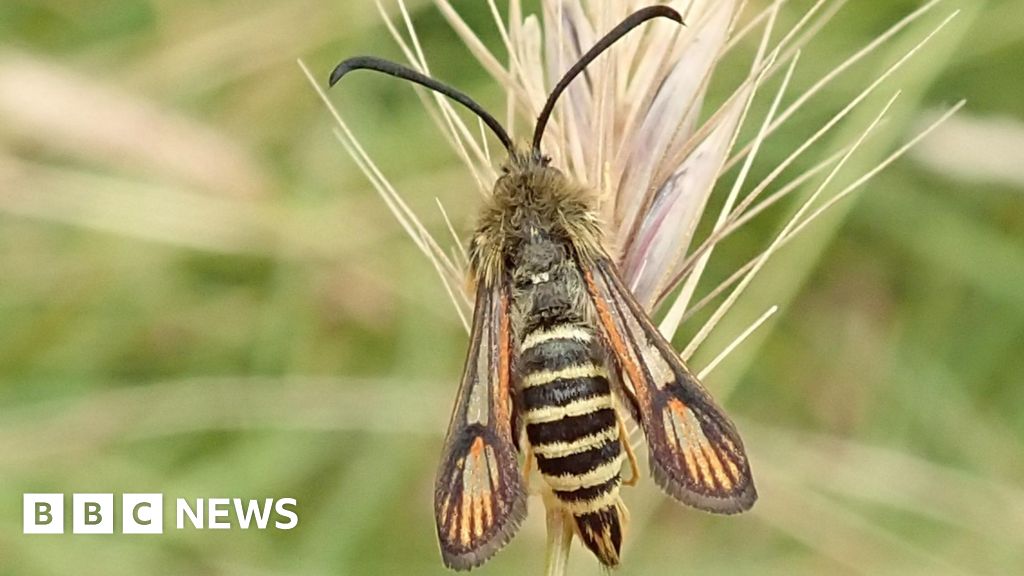A rare moth that mimics the appearance of a wasp has become the 10,000th species of wildlife recorded at a nature reserve.
The six-belted clearwing was found at the National Trust’s Wicken Fen in Cambridgeshire.
The conservation charity believed its wetland site, near Ely, was the “nature reserve with the most recorded species in the UK”.
Countryside manager Alan Kell said: “It is absolutely a case in point that if you give nature the opportunity and the space, it will do remarkable things.”
The six-belted clearwing has a striped yellow abdomen, a bit like wasps, and the similarity was believed to deter predators.
Wildlife records at Wicken Fen date back 200 years and it was the first nature reserve to be acquired by the conservation charity.
“When the National Trust bought Wicken for £10 back in 1899, it was only two acres (0.8ha) in size,” Mr Kell said.
“A concerted effort over time to expand, restore and care for it has created this haven for wildlife that is a thousand times the size it was, and we believe, is the nature reserve with the most recorded species in the UK.”
During the 20th Century, 13 species new to science have been discovered at the reserve.
The charity said the number of species surged since an expansion of the reserve, which started in 1999.
It now extends across 2,053 acres (830ha).
The expansion, combined with warmer temperatures, which led many insects to move further north, and more sophisticated monitoring methods, has helped the reserve to reach the milestone of 10,000 different species.
Mr Kell said: “I never fail to be surprised by what we find here.”

